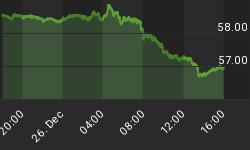For several reasons, China is an enormously important part of the global market for copper (NYSEARCA:CUPM), and now it is dragging the price of copper down because of changes in both demand and supply.
On the demand side, copper is integral to the construction of new buildings, electrical systems, machinery, and electronics. However, the gradual and choppy slow-down in China's industrial output over the past three years has correlated (roughly) with a decline in copper prices. More recent data have shown a sharp drop in China's industrial output and exports during the first months of 2014, and that recent change coincided with a rapid decline in copper prices.
Also on the demand side, copper inventories in China had increasingly been used in recent years in a variety of financing mechanisms that provided businesses with loans they would otherwise be unable to acquire, and that provided investors with higher return than they could find with traditional bonds. This non-traditional financing has taken many different forms, but one of the simplest examples is described below.
Chinese banks are limited in their lending by the amount of deposits they hold. However, they have been able to circumvent that restriction and play a role in lending by facilitating non-traditional loans. For example, a Chinese trader could purchase some refined copper on the global market and import it. The copper would sit in a dockside warehouse, not yet subject to import taxes, and the trader would go on to use the copper as collateral for a letter of credit or a short-term loan from a Chinese bank. The trader would then invest the funds for a brief time in a high-yield managed investment vehicle and would retrieve the funds in time to pay back the bank. Since the bank credit was always covered by collateral, it was not subject to the same regulation that would have applied with a traditional loan that showed up on the bank's balance sheet.
Now there are signs that the demand for copper as collateral may be decreasing for several reasons:
-
First, China's economic slowdown may be depressing demand by businesses for loans - especially the types of higher-interest loans that businesses had previously been obtaining from non-traditional sources, and that sometimes used copper as collateral.
-
Second, the China Banking Regulatory Commission told banks in February that they must reduce their off-balance-sheet lending to a wide set of quasi-public local government financing platforms (LGFPs). Again, some of these finance arrangements have involved copper stockpiles.
-
Third, businesses are increasingly able to obtain financing directly from investor pools and wealth management products (WMPs) that are not tied to bank loans. This type of funding does not require the type of concentrated collateral that we saw in our copper-trading scenario described above.
Along with a double hit on the demand side, copper prices also are presumably seeing pressure from an increase in supply as some of the collateral-backed lending arrangements unwind. More and more of the copper that is still stockpiled in warehouses is now unencumbered and is again available to the market.
More than a year ago, we presented the technical analytic case for a significant decline in the price of copper, and so far that forecast has matched the reality. Price consolidated in a multi-year triangle before breaking downward early in 2013. After having spent the rest of 2013 hovering at a lower plateau of consolidation, price is again breaking downward to seek the next support area, which we believe is between the 2013 low of 2.97 and the Fibonacci-related price support at 2.94. That area might produce a stall, but we do not expect it to hold. Our longer-term forecast is for price to reach closer to the 2.0 area, with 1.80 being a possible Fibonacci-related target in the big picture.

If prices are to tumble from around the support area mentioned above, then the weekly chart shows an updated view of where they might find their next stepping-stone supports. A likely target area for a strong downward wave [iii] would be between 2.62 and 2.75, although it is not inconceivable that a third wave could extend as far as 2.09.

Copper prices are considered a bellwether of changes in economic growth and of large-scale movements in stock indices. Readers can find additional articles about the waning bull market for equity at our website.
Follow us on Twitter @TradingOnMark
















